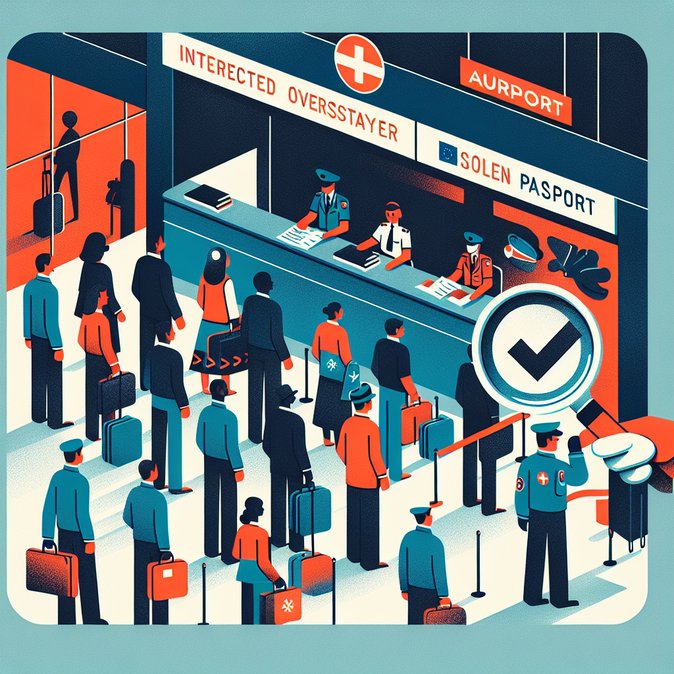
The European Union’s long-awaited Entry/Exit System (EES) went live on October 12, but the first real stress-test for Austrian border authorities came two weeks later, over the National Day long weekend of 26 October. More than 180,000 passengers passed through Vienna-Schwechat, Salzburg and the four other Austrian international airports between Friday evening and Monday morning, the first peak-travel period since the digital border regime replaced manual passport stamping for third-country nationals.
Under the EES, non-EU travellers must provide fingerprints and a facial image the first time they cross an external Schengen air border after 12 October. Airport operator Flughafen Wien AG reported average primary-inspection times of four to six minutes for first-time registrants—well above the 45-second target—but said overall queueing times remained “manageable” thanks to additional staff and self-service kiosks installed over the summer. Interior Minister Gerhard Karner, who toured Vienna Airport’s control hall on 26 October, called the weekend “an important proof of concept” and confirmed that Salzburg will switch on EES lanes on 12 November, followed by Innsbruck (19 Nov), Graz (26 Nov) and Linz/Klagenfurt (3 Dec).
Business-travel associations welcomed the smooth rollout but warned that corporate travellers should expect sporadic bottlenecks until the six-month transition period ends on 10 April 2026. Airlines operating early-morning departures reported that travellers unfamiliar with the new biometric process occasionally created knock-on delays at security and boarding. Vienna Airport has published multilingual explainer videos and recommends that non-EU passengers arrive at least 30 minutes earlier than before.
The National Day weekend also revealed the first operational benefits of the EES. Border police were able to flag ten travellers who had previously overstayed Schengen limits and two passports that had been reported stolen—interventions that would have relied on manual spot checks under the old system. EU Home-Affairs Commissioner Magnus Brunner said the data prove “why a digital backbone for European border management is indispensable.”
Looking ahead, the government will launch an information campaign for ski-season visitors from the UK, US and Asia, the next big influx expected over Christmas. Travel-management companies are advising corporate clients to preload passport data into airline apps where possible and to schedule longer connection windows when routing staff through Austrian hubs during the transition.
For mobility managers, the takeaway is clear: build in buffer time, brief employees on biometrics, and monitor the phased EES activation at secondary airports to avoid surprises on regional itineraries.
Under the EES, non-EU travellers must provide fingerprints and a facial image the first time they cross an external Schengen air border after 12 October. Airport operator Flughafen Wien AG reported average primary-inspection times of four to six minutes for first-time registrants—well above the 45-second target—but said overall queueing times remained “manageable” thanks to additional staff and self-service kiosks installed over the summer. Interior Minister Gerhard Karner, who toured Vienna Airport’s control hall on 26 October, called the weekend “an important proof of concept” and confirmed that Salzburg will switch on EES lanes on 12 November, followed by Innsbruck (19 Nov), Graz (26 Nov) and Linz/Klagenfurt (3 Dec).
Business-travel associations welcomed the smooth rollout but warned that corporate travellers should expect sporadic bottlenecks until the six-month transition period ends on 10 April 2026. Airlines operating early-morning departures reported that travellers unfamiliar with the new biometric process occasionally created knock-on delays at security and boarding. Vienna Airport has published multilingual explainer videos and recommends that non-EU passengers arrive at least 30 minutes earlier than before.
The National Day weekend also revealed the first operational benefits of the EES. Border police were able to flag ten travellers who had previously overstayed Schengen limits and two passports that had been reported stolen—interventions that would have relied on manual spot checks under the old system. EU Home-Affairs Commissioner Magnus Brunner said the data prove “why a digital backbone for European border management is indispensable.”
Looking ahead, the government will launch an information campaign for ski-season visitors from the UK, US and Asia, the next big influx expected over Christmas. Travel-management companies are advising corporate clients to preload passport data into airline apps where possible and to schedule longer connection windows when routing staff through Austrian hubs during the transition.
For mobility managers, the takeaway is clear: build in buffer time, brief employees on biometrics, and monitor the phased EES activation at secondary airports to avoid surprises on regional itineraries.










